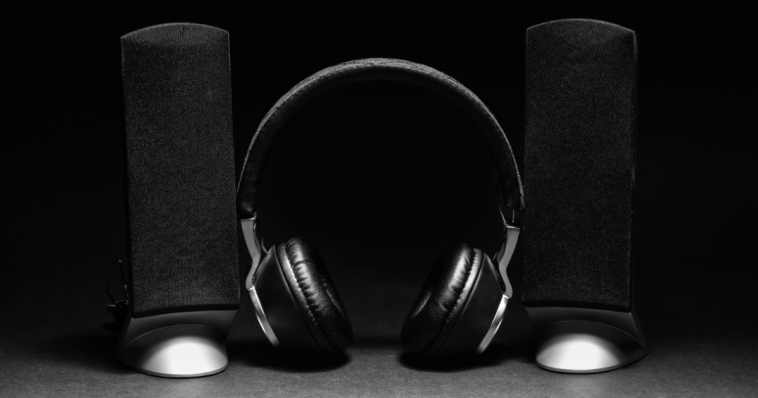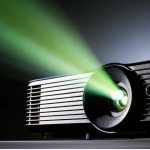In today’s digital age, sound is more than just an accompaniment to our lives—it’s an integral part of our experiences. Whether it’s the music that fuels your workouts, the cinematic audio that elevates your movie nights, or the clear communication needed during work calls, the quality of sound matters; the right audio output device can do more than amplify sound; it can transform your entertainment, enhance productivity, and make communication seamless. This blog guides you in choosing the best audio output devices for your unique needs and preferences, ensuring every beat, note, and word is heard as intended.
Understanding Audio Output Devices
What Are Audio Output Devices?
Audio output devices convert digital audio signals into analog sound waves we can hear. They bridge the gap between technology and our ears, making them essential tools for consuming digital content.
Common Types of Audio Output Devices
1. Headphones
- Over-ear: Over-ear headphones are designed to fully encase your ears, providing excellent sound isolation and a more immersive listening experience. These headphones are known for their comfort, making them an excellent choice for extended listening sessions or gaming marathons. Their larger ear cups allow more spacious drivers, improving sound quality and dynamic range. However, they can be bulky and less portable, which might make them impractical for on-the-go use. Despite their size, over-ear headphones are often preferred by audiophiles and professionals for their superior performance and comfort.
- On-ear: On-ear headphones rest directly on your ears, offering a smaller, more portable alternative to over-ear models. They are lightweight and easy to carry, making them a convenient choice for commuting or casual use. However, their smaller size may result in less effective noise isolation, as they don’t fully enclose your ears. Prolonged use of on-ear headphones can also cause discomfort for some users, especially if the ear pads press against the ears too tightly. While they may not deliver the same sound quality as over-ear models, on-ear headphones are a versatile option for those seeking a balance between portability and performance.
- In-ear (Earbuds): In-ear headphones, commonly known as earbuds, are the most compact and portable type of headphones available. They fit snugly into your ear canals, offering decent noise isolation and a convenient design for active lifestyles. Many earbuds now have advanced features like active noise cancellation and sweat resistance, making them ideal for workouts and travel. However, some users find extended use of in-ear headphones uncomfortable due to their intrusive design. Despite this, their lightweight build and portability make them popular for casual listening and mobile use.
2. Speakers
- Desktop Speakers: Desktop speakers are compact and designed to fit on a desk, making them ideal for use in smaller spaces like home offices or dorm rooms. They offer a step up from built-in computer or laptop speakers, delivering clearer and more powerful audio. Many desktop speakers are plug-and-play, making them easy to set up and use without additional equipment. While their size limits their bass response, they can still produce balanced sound for casual music listening, gaming, or video calls. Desktop speakers are a budget-friendly option for those seeking better sound without taking up too much space.
- Bookshelf Speakers: Bookshelf speakers are mid-sized speakers designed to deliver high-quality sound in a relatively compact form. They are versatile and can be used in various environments, from small living rooms to dedicated home audio setups. These speakers often balance size and sound quality, making them suitable for music enthusiasts and casual listeners. Pairing them with a subwoofer can enhance their bass response, creating a fuller sound profile. Bookshelf speakers are excellent for those who want better audio without committing to larger, more expensive floor-standing options.
- Floor-standing Speakers: Floor-standing or tower speakers are designed to deliver a powerful and immersive audio experience. Their larger cabinets house multiple drivers, including woofers, tweeters, and sometimes midrange drivers, allowing them to cover a broad frequency range. These speakers are ideal for audiophiles or home theater enthusiasts who want a rich, full-bodied sound that fills the room. However, their size and weight can make it challenging for them to move and require a significant amount of floor space. Despite these drawbacks, floor-standing speakers are a top choice for those seeking the best possible sound quality at home.
- Soundbars: Soundbars are sleek, elongated speakers that fit conveniently beneath or alongside a television. They offer a significant improvement over the built-in speakers found in most TVs, providing clearer dialogue and enhanced audio depth. Many soundbars include features like virtual surround sound, Bluetooth connectivity, and subwoofers for a more robust listening experience. Their compact design makes them easy to set up and an excellent option for those with limited space. Soundbars are a practical choice for anyone looking to upgrade their home entertainment system without the complexity of a multi-speaker setup.
- Built-in Speakers: Built-in speakers are commonly found in devices like laptops, smartphones, and tablets, offering basic audio functionality. While convenient for everyday tasks like video calls and casual media consumption, these speakers typically lack depth and power. They are limited by their small size, resulting in a tinny sound and minimal bass response. For users who value high-quality audio, built-in speakers often fall short and require external devices for a better experience. Despite their limitations, built-in speakers remain a practical solution for quick and portable audio needs.
Factors to Consider When Choosing
1. Usage and Lifestyle
- Portability: If you’re always on the go, portability is key. Compact options like earbuds or Bluetooth speakers are ideal. For home use, larger speakers or soundbars may be better suited.
- Activity: Are you a gamer, a movie enthusiast, or someone who primarily uses audio devices for work calls? Low latency is crucial for gamers to keep visuals and sound in sync. For movie lovers, immersive sound systems can replicate a cinematic experience.
- Listening Environment: In noisy environments, noise-isolating headphones or active noise-canceling earbuds can block distractions, ensuring a clear and enjoyable listening experience.
2. Sound Quality
- For Headphones/Earbuds:
- Frequency Response: A broader range, like 20Hz-20kHz, ensures better sound reproduction across lows, mids, and highs.
- Impedance: Devices with higher impedance require more power to deliver optimal sound. Check if your audio source can handle this.
- Noise Isolation: Passive isolation uses physical barriers, while active noise cancellation reduces ambient noise electronically.
- For Speakers/Soundbars:
- Frequency Response: Balanced sound across the audio spectrum ensures accurate playback.
- Dynamic Range: Look for devices that effectively handle quiet and loud sounds.
- Special Features:
- Subwoofers: Enhance deep bass, adding depth to music and movies.
- Surround Sound: Delivers a 360-degree audio experience, making you feel immersed.
3. Connectivity Options
- Wired Connections:
- 3.5mm Jack: Widely supported and simple to use.
- USB: Offers digital transmission, often providing better sound quality.
- Wireless Connections:
- Bluetooth: Highly convenient but may suffer from occasional interference or slight delay.
- Wi-Fi: Provides greater range and higher quality than Bluetooth but requires compatible devices.
Choosing the Right Device for Specific Use Cases
1. Music Enthusiasts
Sound quality is the ultimate priority for music enthusiasts, as it defines their listening experience. High-fidelity headphones or speakers with a broad frequency response and impressive dynamic range are essential to reproduce sound accurately. These devices allow listeners to enjoy every note, beat, and nuance as the artist intended. Studio monitors are an excellent choice for audiophiles and critical listeners, offering a flat frequency response for uncompromised sound quality. Whether enjoying classical symphonies or bass-heavy tracks, investing in premium audio gear elevates your music appreciation.
2. Gamers
Gamers rely on audio for more than just entertainment; it’s a critical part of their performance and immersion. Low-latency audio is essential to ensure sounds are perfectly synchronized with on-screen action, avoiding any delay that could disrupt gameplay. Wired headphones or Bluetooth models with advanced codecs like aptX Low Latency are great options for minimizing lag. Surround sound systems or virtual surround-enabled headphones create an immersive experience, allowing gamers to hear directional cues and react accordingly. High-quality audio devices can make the difference between winning and losing for competitive gaming or casual adventures.
3. Movie Lovers
For movie lovers, the audio experience is as important as the visuals, as it completes the cinematic immersion. Soundbars are a popular choice, offering a convenient and budget-friendly way to enhance TV audio with clearer dialogue and richer sound. For a more authentic theater-like experience, surround sound systems with subwoofers deliver deep bass and enveloping soundscapes. These setups bring action sequences, dramatic scores, and even subtle sound effects to life, creating an engaging atmosphere. Whether an explosive blockbuster or a quiet drama, a well-chosen audio device transforms your living room into a personal cinema.
4. Professionals
- Musicians and Content Creators: Studio monitors and high-quality headphones are essential for accurate audio production. These devices often feature a flat frequency response, ensuring no artificial boosts in bass or treble.
- Office Workers: Look for headphones with a built-in microphone and active noise cancellation to ensure clear communication in any work-call environment.
Tips for Choosing and Using
- Read Reviews: Online reviews from trusted sources can provide insights into the performance and durability of audio devices.
- Test Before Buying: Try different devices in-store to determine which sound profile suits your taste.
- Budget Considerations: While high-end options offer premium features, there are excellent mid-range devices that deliver great value for money.
- Care and Maintenance: Follow the manufacturer’s guidelines for cleaning and storing your devices to prolong their lifespan.
Choosing the right audio output device can significantly enhance your listening experience, whether enjoying a symphony, immersed in a game, or focused on work. By considering your usage, lifestyle, and sound preferences, you can find the perfect device to match your needs. Remember, the key is to experiment and explore. Technology constantly evolves, and new devices are designed to meet every audio enthusiast’s needs. Dive in, research, and let your ears guide you to the perfect sound.




